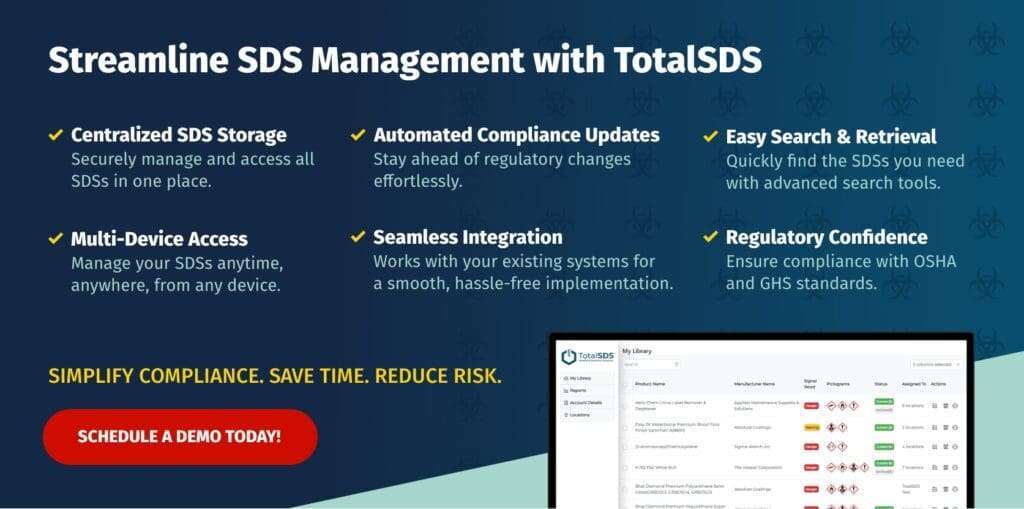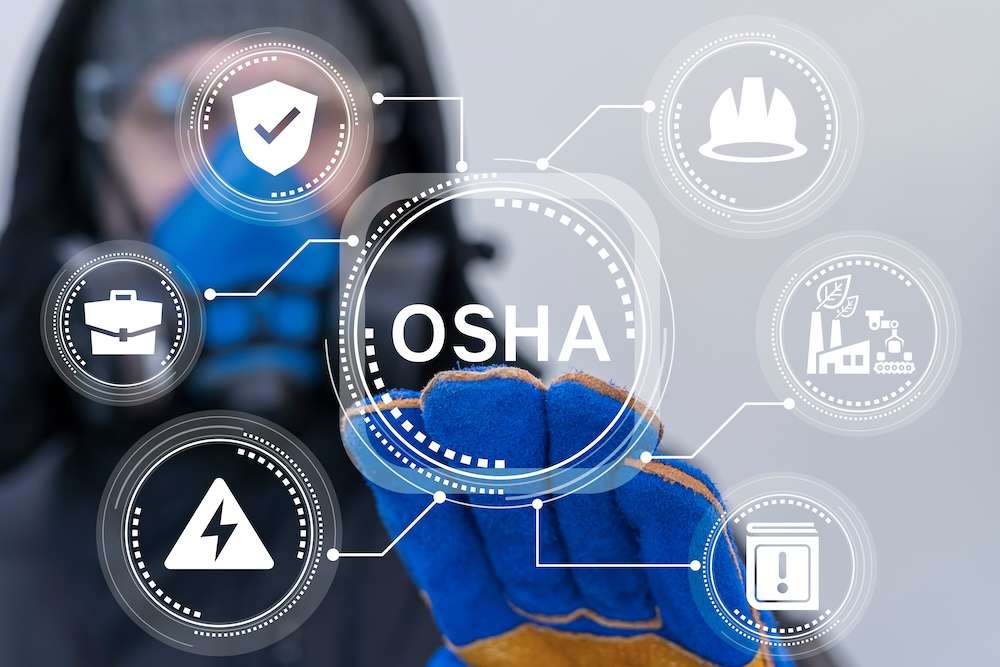When it comes to hazardous chemicals and regulatory compliance, businesses must navigate a complex web of agencies, standards, and legal requirements.
Understanding the Globally Harmonized System (GHS) and OSHA’s Hazard Communication Standard (HazCom) is crucial for ensuring workplace safety and compliance. Additionally, organizations operating internationally must also adhere to REACH (EU) and CLP regulations, which align with GHS but introduce additional regional requirements.
In this guide, we’ll break down each governing body’s role, their key regulations, and how your business can stay compliant.
OSHA and GHS: Key Compliance Standards
What is OSHA?
In the United States, the Occupational Safety and Health Administration (OSHA) enforces workplace safety standards to protect employees from occupational hazards. Under OSHA law, employers are responsible for providing a safe and healthful workplace, including proper hazard communication through Safety Data Sheets (SDSs) and labeling requirements.
OSHA’s HazCom Standard (HCS 2012) integrates GHS principles, requiring businesses to classify chemicals, provide SDSs, and label hazardous substances with standardized pictograms and hazard statements.
What is the Globally Harmonized System (GHS)?
The Globally Harmonized System (GHS), adopted by the United Nations in 2003, is designed to standardize chemical classification and labeling worldwide. GHS improves communication about chemical hazards across international borders, ensuring that manufacturers, distributors, and workplaces use a consistent hazard identification system.
OSHA adopted GHS into HazCom in 2012, requiring manufacturers and importers to disclose chemical hazards clearly.
REACH & CLP: How They Compare to OSHA & GHS
What is REACH?
REACH (Registration, Evaluation, Authorization, and Restriction of Chemicals) is the European Union’s regulatory framework for managing chemical risks. Unlike OSHA, which focuses on workplace safety, REACH applies to all chemicals—industrial and consumer products alike. Businesses selling chemicals in the EU must demonstrate safety through registration and ongoing monitoring.
One key difference between REACH and OSHA’s HazCom Standard is that REACH requires companies to prove the safety of their substances before they can be marketed. OSHA, on the other hand, mandates hazard communication through proper labeling and SDSs but does not require pre-market approval.
What is CLP?
CLP (Classification, Labeling, and Packaging Regulation) is the EU’s adaptation of GHS. It ensures that chemical substances and mixtures are classified and labeled consistently across the European market.
CLP aligns closely with OSHA’s HazCom Standard, but companies operating in both the U.S. and EU must comply with both OSHA and CLP regulations.
Key Differences Between OSHA, GHS, REACH, and CLP
| Regulation | Scope | Key Requirement |
| OSHA HazCom | U.S. workplace safety | Ensures chemical hazards are communicated via labels and SDSs |
| GHS | Global framework | Standardizes chemical classification and labeling worldwide |
| REACH | EU chemical safety | Requires companies to prove chemical safety before marketing |
| CLP | EU classification | Aligns EU labeling with GHS and requires additional registrations |
For businesses operating in multiple regions, compliance with all these regulations requires a comprehensive SDS management strategy to ensure proper classification, documentation, and labeling.
Upcoming OSHA & GHS Updates
As of March 2025, the latest revision of the Globally Harmonized System of Classification and Labelling of Chemicals (GHS) is the 10th Revised Edition, published in 2023. This edition introduces significant updates, including:
- Revised Classification Procedures: Enhancements to the classification process for desensitized explosives. UNECE
- Promotion of Non-Animal Testing Methods: Incorporation of non-animal testing approaches for assessing health hazards such as skin corrosion/irritation, serious eye damage/irritation, and respiratory or skin sensitization. Chemycal, UNECE
- Updated Guidance on Metals and Metal Compounds: Alignment of classification strategies and tools for metals and their compounds with provisions for long-term aquatic toxicity.
These changes aim to enhance the precision and consistency of hazard communication, supporting global chemical safety initiatives and regulatory compliance.
Regarding OSHA’s Hazard Communication Standard (HCS), as of July 19, 2024, it has been updated to align primarily with the 7th Revised Edition of the GHS. This alignment includes updates to hazard classification criteria, standardized label elements, and safety data sheet requirements to improve consistency in hazard communication.
It’s important to note that while the GHS provides a framework for hazard communication, individual countries or regions may adopt different versions of the GHS revisions based on their regulatory timelines and requirements. OSHA’s alignment with the 7th Revised Edition means that, despite the publication of the 10th Revised Edition of the GHS, OSHA’s regulations are based on the earlier version. Always consult the latest information from OSHA and other relevant authorities to ensure compliance with current regulations.
Stay Compliant with the Right SDS Management Tools
Keeping up with GHS, OSHA, REACH, and CLP regulations can be overwhelming. However, the right SDS management software can simplify compliance by:
- Ensuring instant access to SDSs from any device
- Simplifying the process of updating SDSs to reflect regulatory changes
- Providing real-time compliance tracking
Get Expert Compliance Support Today
Don’t let compliance gaps put your business at risk. Ensure your workplace is aligned with OSHA, GHS, and international standards. Schedule a demo with TotalSDS software solutions.



